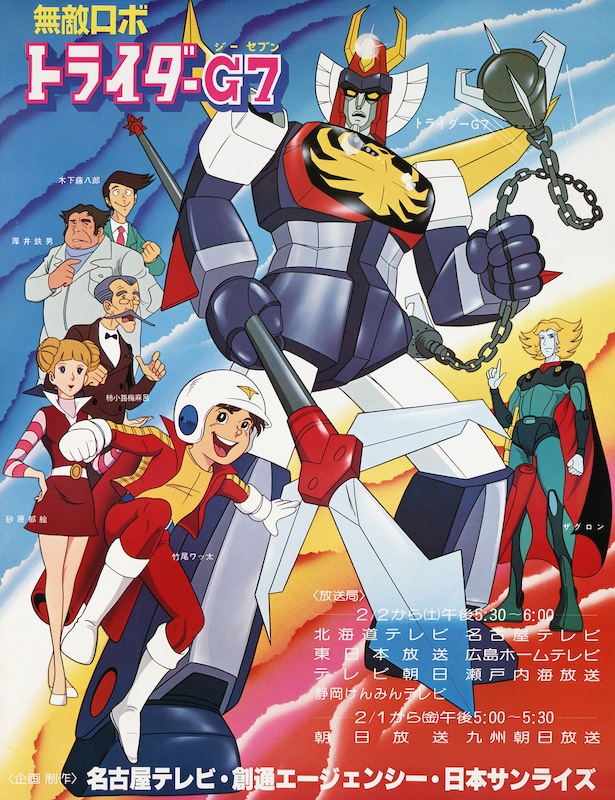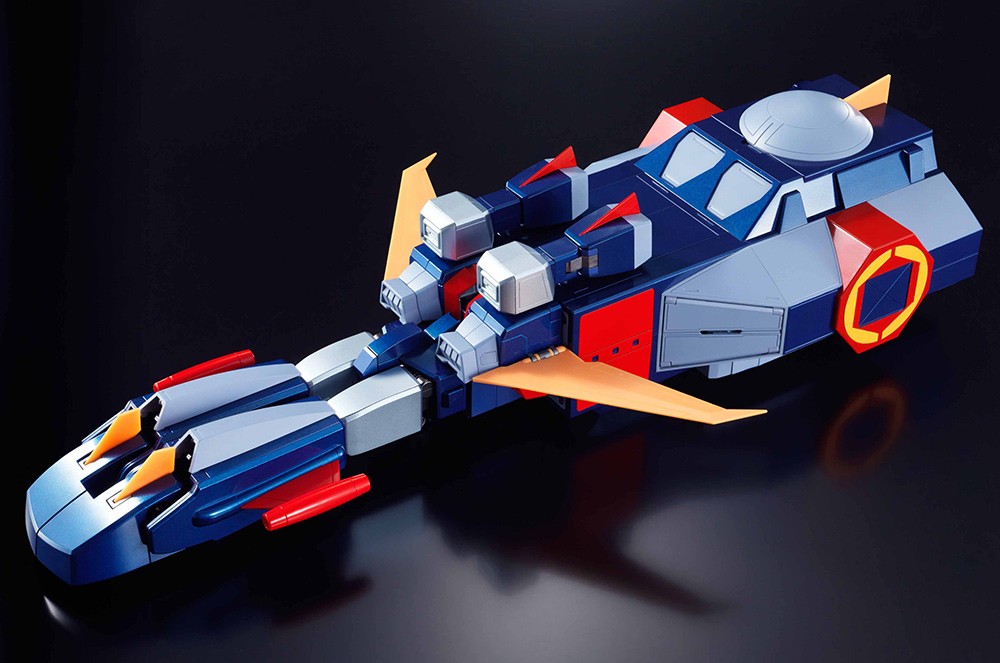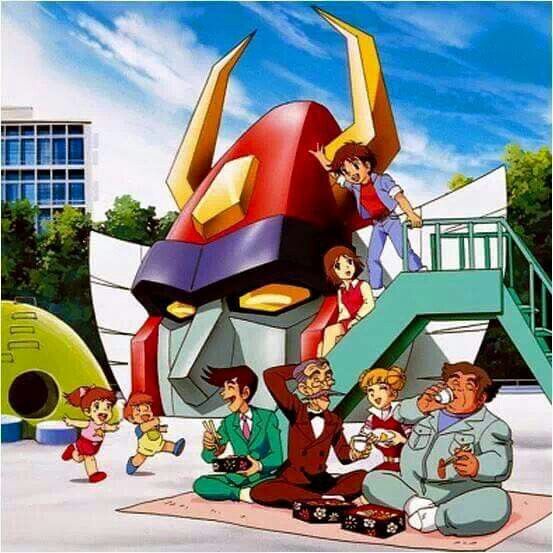Studio Sunrise’s Muteki Robo Trider G7 ran from Feb. 1980 to Jan. 1981. I had the time to watch the 50 episodes recently and enjoyed it. While not my favorite and certainly an odd duck when compared to most other mecha anime, it nonetheless had a charm all its own.

The story follows the adventures of Takeo Watta, a Japanese boy of about 12. The story takes place in a future where the moon and Mars are populated and colonization has begun. People operate space stations and regularly travel through the solar system. Yet, somehow daily life in Japan operates exactly as it did in 1980. People dress the same, live the same, etc. Watta’s father owned a small transport and trouble-shooting company that got short term contracts that involved transporting goods or protecting a location from a specific threat. The company’s only real asset was a well armed super robot, Trider G7, that could transform into a spaceship and travel anywhere in the solar system on short notice.
When Watta’s father died the company had no one to operate Trider G7 as was about to fold. Watta, still a grade school boy, stepped forward and declared his decision to get a license for operating a giant robot and become the company’s new president. The four employees could keep their jobs and Watta’s father’s legacy would continue.

Most episodes followed the same format: Watta is seen at home, school or his neighborhood dealing with situations typical for 12 year old boys. Suddenly, one of his employees bursts onto the scene and announces they have a job and Watta must come immediately to operate Trider G7. Trider G7 launches, transforms into a space ship and docks with the shuttle where the four employees are strapped in. On the way to the moon or Mars Watta gets called back to the conference table in the shuttle where a snack is served. Every time it’s a different snack familiar to Japanese people and Watta talks with his employees about the food and then about what’s happening in their lives. When the destination is reached they see an attacking giant robot and Watta separates the Trider G7 from the shuttle. After a fierce and brief battle the enemy is destroyed and Watta gets back to Earth just in time to resolve what issue he was dealing with at the episode’s start.
Trider G7 was a really blue-collar, down to earth sort of show that was clearly written to appeal to a younger audience. In a way I saw it as two different shows pressed together. The first show was the super robot and its plucky young pilot battling evil. The second show was a typical grade school boy dealing with ordinary things familiar to the audience. Seeing the narrative switch gears between such different things at least twice per episode took some getting used to but the show’s appeal made me come along for the ride.

Trider G7 is one of the shows that is remembered well in Japan years after it went off the air. I’ve been thinking lately about what makes some mecha anime remembered fondly years later while others are mostly forgotten. Perhaps some of it was Studio Sunrise’s clever marketing or the successful robot color scheme of red, dark blue and white with some yellow. Trider G7 didn’t have a strong story or memorable villains. I’d say the likable characters and warm, heartful portrayal of daily life in a Japanese town hit the right note with young viewers.
I lived in Japan in the early 90s for more than a year so the “slice of life” stories appealed to me. The friendly, thoughtful characters made me want to see what would happen in their lives. The show was made on the tail-end of the 70s which had a lot of decent, moral characters who were intended to be role models for the viewers. The angst-ridden, self-absorbed characters of later decades still weren’t a fixture in mecha anime in 1980. If someone were to describe the show to me before seeing it, I probably would have avoided it. The odd mixture of two very different premises sounds like it would make for painful viewing but somehow Trider G7 made it work. This is a show that asks for a big suspension of disbelief. How can a twelve year old be made the actual president of a company? Why does his school allow him to run out of class on a regular basis? What government would allow a private company to use a robot stuffed full of military grade weapons? Who would grant a license to operate a giant robot to a twelve year old? If you’re willing to put aside such thoughts, the show can really grow on you after a few episodes.
My complaint was the translation. I watched a fan sub and there is evidence to suggest they wrote the English subtitles based on the script for Italian television. Also, the fan subbers didn’t do a good job of editing the sentences for good readability. My knowledge of Japanese helped me smooth out a lot of the pain of the poor translation.
Although, I’d recommend this show to anime fans I’d make it clear you should have some experience with daily life in Japan or you may not see the show’s appeal.






